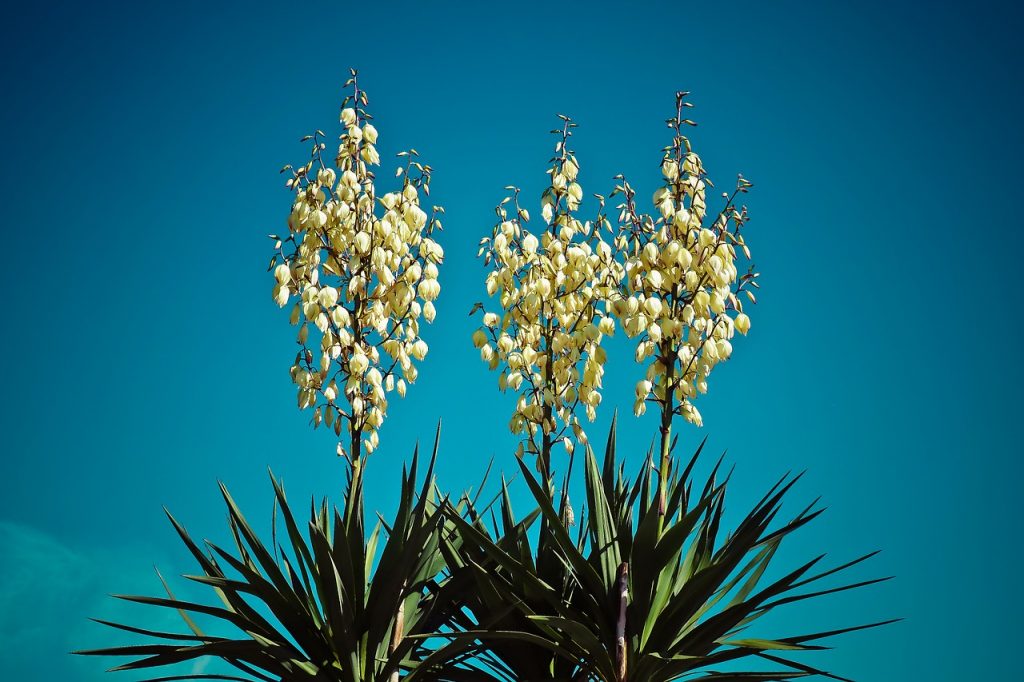
Yucca plants are a perfect addition if you’re looking to make a statement. These plants are large enough to really grab a persons attention and offer bold shapes to stand out from the rest. Yucca plants come in many different shapes and sizes so there are plenty to think about before you decide which one is best for you.
The most important thing to consider before making a purchase is the size of a yucca, you need to ensure that you have enough space for this plant in your home or garden. Also, consider the height that the plant grows to, some can grow pretty tall, which is wonderful if you have the space for it, otherwise it might outgrow the area. However, they are known to be quite slow growing so you can still enjoy it for many years to come before potentially having to relocate your yucca plant.
There’s over 40 species of Yucca, so I’ve put together a list of what I consider to be the most unique looking Yucca plants.
1
Table of Contents
Spineless Yucca (Elephantipes)

This is the best option for an indoor yucca as it’s commonly grown in small pots. Although it can grow to heights of up to 30ft, it doesn’t mind being pot bound so its easy to control growth.
It’s really easy to care for too, so will survive even if you neglect it.
If you want to get your hands on one, check out this one on Amazon.
2
Banana Yucca (Baccata)

Banana Yucca plants are named after the fruits that they grow, they look like small, fat, green bananas. The fruits are supposed to be really sweet and often used in cake recipes. The plant itself will reach a height of around 1-1.5 metres with the leaves reaching lengths of 1m. It usually grows on its own but can sometimes be find in clumps, similar to other Yucca plants.
3
Beaked Yucca (Rostrata)
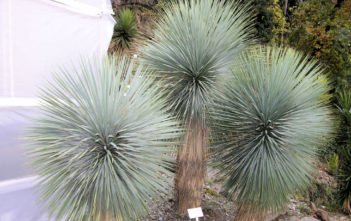
The beaked yucca is perhaps the most interesting looking out of the lot. It’s very ornamental as it grows very slow so it requires little maintenance. It can grow pretty tall, reaching heights of up to 4.5m. It’s also one of the hardiest yucca plants, it can tolerate temperatures as low as -22C and long periods of little to no water.
4
Joshua Tree (Brevifolia)
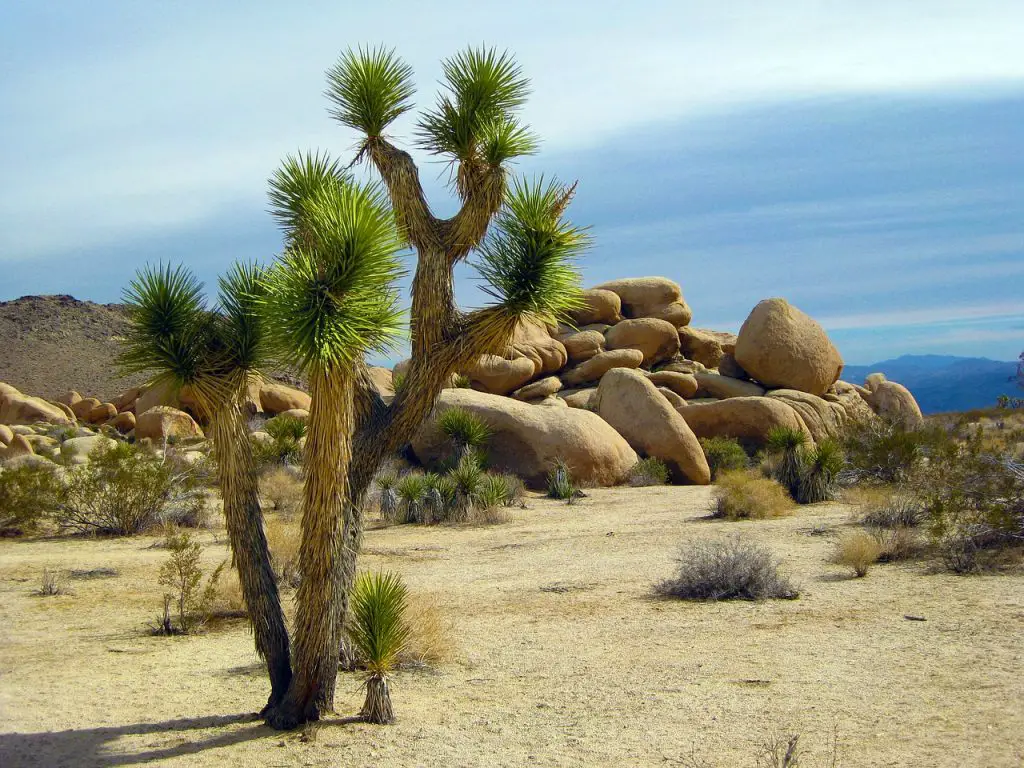
The Joshua Tree is native to south-western USA. California, Nevada, Arizona and Utah to be specific. There’s even a national park dedicated to them in California. It’s the largest of the Yucca Tree family and can grow up to 40 feet tall whilst surviving for well over 100 years in the right environments. It’s a pretty adaptable plant but will do best in warmer environments where the temperature is consistently around 21C.
5
Adam’s Needle (Filamentosa)

Adam’s Needle plants tend to grow around 2-3 feet in height, with the base not exceeding that in width. It’s a hardy plant and it has become naturalized in northern parts of the USA. It grows best with full sun but can tolerate some shade. As for water, it requires soil that drains well but it will cope if you neglect it for a little while.
6
Spanish Bayonet (Aloifolia)
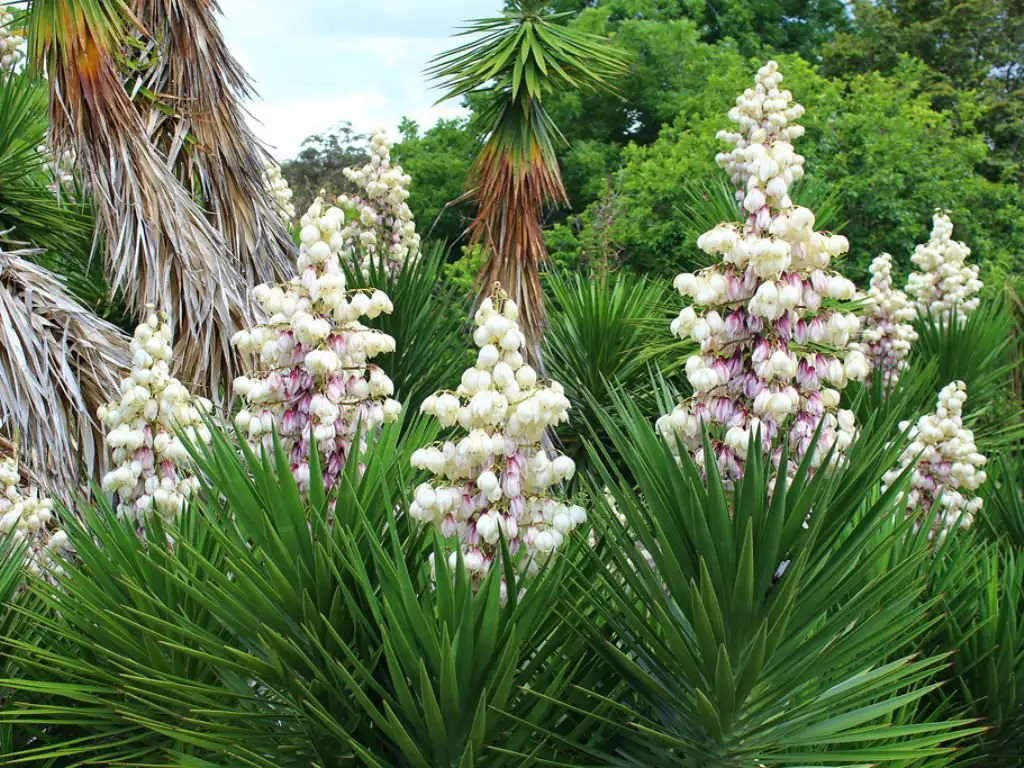
Spanish Bayonets are native to southern USA, Mexico and Central America. The large white flowers are a sweet treat that can even be consumed raw. The name comes from the sharp leaves, like a bayonet. Due to the leaves, it’s often planted near windows as it acts as a form of security. You can expect this plant to grow up to 1m in height. It requires full sun but can cope with partial shade.
7
Beargrass Yucca (Smalliana)
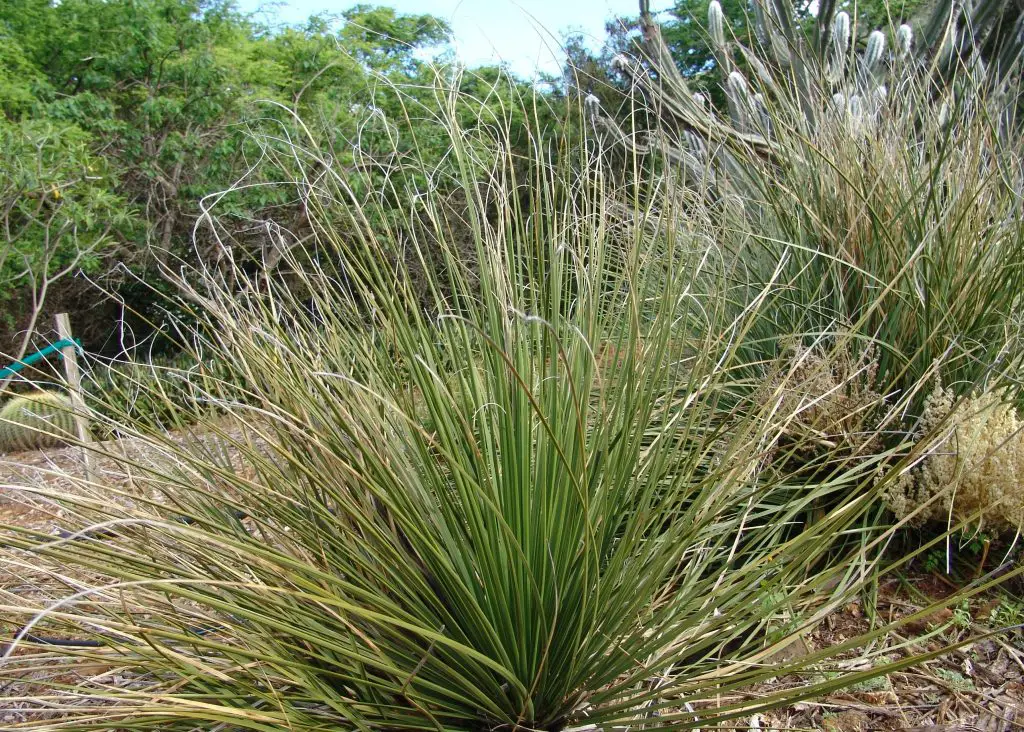
Beargrass Yuccas are one of the most adaptable desert plants, they’re even known to have naturalized in Illinois. They look similar to Adam’s Needle yuccas but are distinguishable by their narrow leaves. It’s quite a bushy plant and the stems can grow up to 2.5m with flowers blossoming on the tips in summer. To care for this plant it will need plenty of sunlight.
8
Spanish Dagger (Gloriosa)
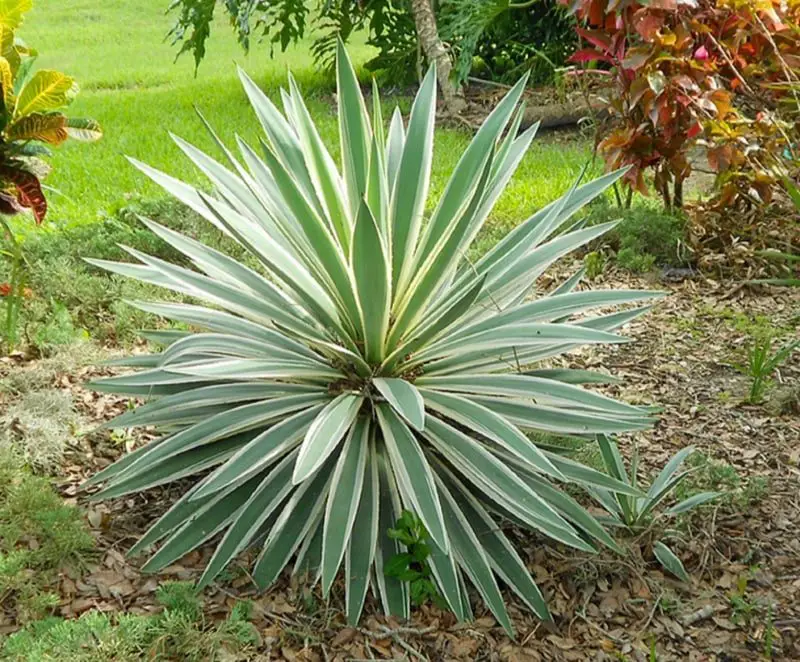
This yucca is also native to the southern areas of the USA. It has spine tipped, pointed leaves that resemble the shape of a dagger, hence the name. These leaves can grow up to 1m in length with white, bell-shaped flowers appearing in late summer. The plant itself can grow up to 2.5m in height and width, taking up a total area of 6.25m2. It will require full sun light to really thrive and can survive short droughts.
9
Soapweed Yucca (Glauca)
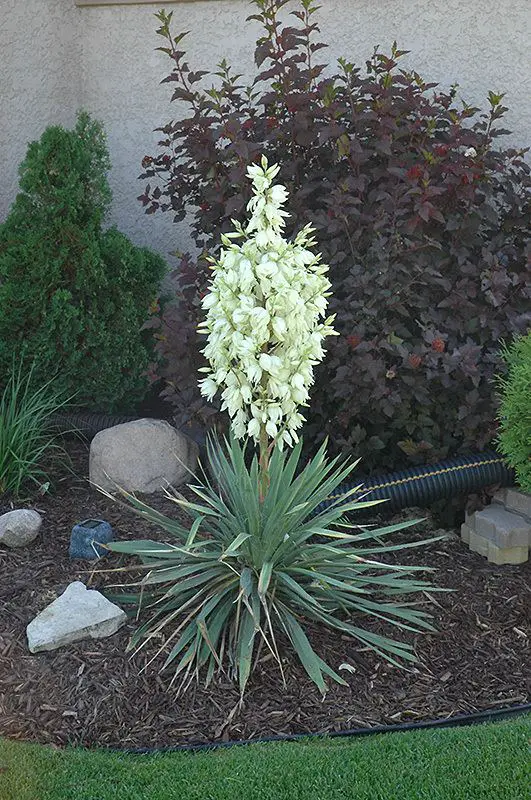
As you might’ve gathered from the name of this plant, it’s commonly used to make soap and shampoo.
During the summer months, the stalk rises around 1m above the plant base, with the white blooms appearing.
This plant requires plenty of sunlight or you’ll find the leaves looking weak and it’s much less likely to bloom.
10
Our Lord’s Candle (Whipplei)
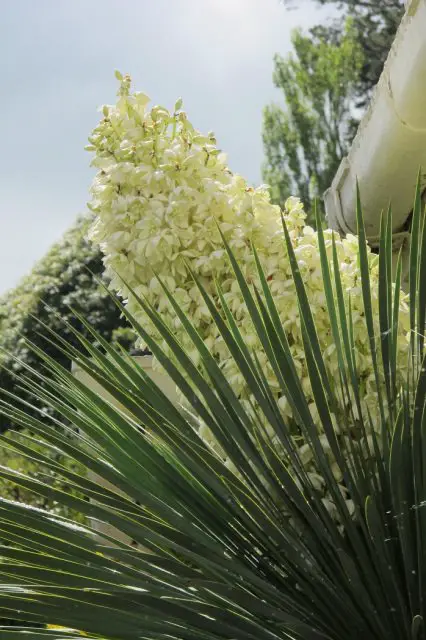
Whipplei yuccas are native to southern California and Mexico.
They produce giant flower spikes that can grow up to 5m in length in their natural environments.
In summer they produce beautiful white flowers that have a nice scent to go along with them.
They require plenty of sunlight to grow and to be located in well draining soil.
